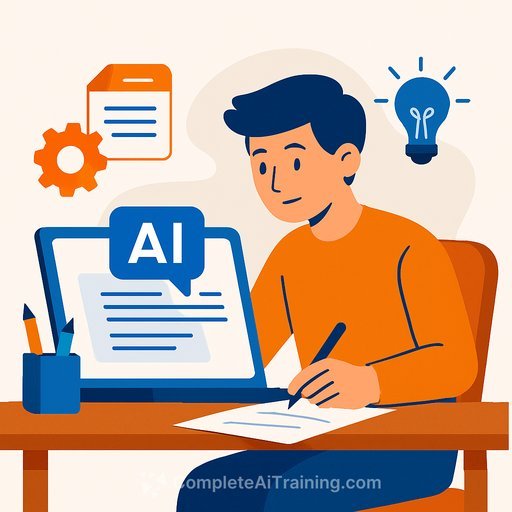How Much Of The Internet Is Now Written By AI? What Writers Need To Know
A recent study from Five Percent suggests AI-generated articles now outnumber human-written pieces. In 2023, roughly 39% of published articles were AI-written. By November 2024, the balance tipped: more content was produced by AI than by humans.
The growth curve has cooled since mid-2023, and there's a silver lining for writers. AI-written articles tend to underperform in search. Google appears to be filtering a lot of low-value, machine-spun content.
How the study measured "AI-written"
Researchers used Surfer's AI detection tool and labeled an article "generated" if over 50% of its text was likely written by AI. They validated the tool in two ways.
- 6,009 articles produced by GPT-4o: the tool flagged 99.4% correctly as AI-generated.
- 15,894 articles from 2020-2022 (pre-ChatGPT): 4.2% were flagged as AI-written, indicating a 4.2% false positive rate.
Important nuance: the study did not count AI-written content that was heavily edited by humans. That means the true volume of AI-assisted writing could be even higher.
The takeaway for working writers
- Differentiation matters. Original reporting, interviews, first-hand experience, and clear opinions separate you from generic outputs.
- Search rewards usefulness. Add specifics: data, quotes, steps, examples, screenshots, and context that a generic model wouldn't know.
- Voice is a moat. Consistent style, stories, and judgment build trust signals that bland AI can't mimic well.
- Quality beats volume. A few pages that answer the query better than anyone else can outrank piles of filler.
How to avoid the "AI slop" trap
- Write the core first: thesis, outline, key arguments, and examples. Let tools assist after you've set the direction.
- Layer in evidence: statistics, original quotes, expert references, and links to primary sources.
- Edit for humanity: vary sentence length, add specificity, trim clichés, and remove filler phrases.
- Show experience: note what you tried, what failed, and what worked. Add screenshots or brief case notes.
- Keep receipts: research notes and edit history help prove human authorship if challenged.
- Use detectors sparingly: they can be wrong. Treat them as a sniff test, not a verdict.
A practical workflow that balances speed and quality
- Plan: define the problem, reader intent, and your unique angle.
- Research: gather 3-5 credible sources and 1-2 original inputs (tests, interviews, datasets).
- Draft: write the opening, core argument, and conclusions yourself. Keep it tight.
- Assist: use AI to suggest structure tweaks, surface counterpoints, or tighten prose-then review line by line.
- Enrich: add examples, screenshots, and citations. Link to authoritative references where helpful.
- Final pass: read out loud, cut fluff, and ensure every section answers a specific reader question.
What about AI beyond text?
AI music, art, and even films are gaining traction. That's interesting, but your edge remains the same: taste, judgment, and lived experience. Use tools to move faster, not to flatten your voice.
Will AI-written content keep growing?
Likely, but its search performance may stay capped if quality doesn't match intent. If you create clear, useful, experience-backed pieces, you'll win against mass-produced fluff more often than not.
Further reading and useful resources
- Google's guidance on AI-generated content in Search
- Curated AI tools for copywriting (Complete AI Training)
- Courses for writers and content roles (Complete AI Training)
Bottom line
Yes, there's more AI-written content than human-written in many corners of the web. But the bar for ranking hasn't changed: be specific, be useful, and bring original insight. Writers who do that won't be replaced-they'll be bookmarked.
Your membership also unlocks:






